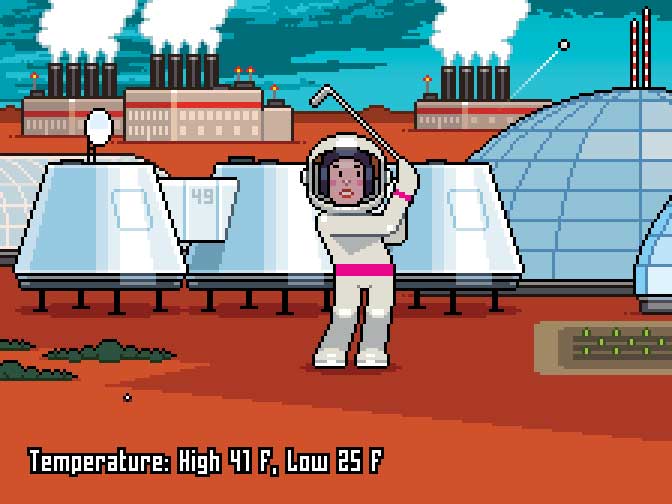So, you want to terraform Mars? Here’s one way to do it.
Climate change could make the red planet livable within 100 years.


Now/Then
Mars is known as the Red Planet, but we could color it green. By unleashing greenhouse gases that trap the sun’s heat—something humans happen to be very good at—we could build a warmer, breathable atmosphere that protects our settlers from deep-space radiation. NASA astrobiologist Chris McKay thinks we could have mild temperatures after about 100 years of terraforming. But it’ll take much longer to re-create the sweet cocktail of 21 percent oxygen, 0.04 percent carbon dioxide, and 78 percent nitrogen that fills our lungs on Earth.
Year 1

As the first colonists arrive, robots mine rocks for the critical element fluorine to produce perfluorinated compounds (PFCs)—mostly nontoxic gases that are great at trapping heat. The sun can do the rest of the work; McKay estimates that four hours of Martian sunshine contains more energy than all of Earth’s nuclear weapons.
Year 50

The heat boost from PFCs helps release carbon dioxide frozen in the soil and ice caps, dialing up the temperature. With the warmth, ice melts and water accumulates in lakes and streams; snowstorms and rain sweep across the Martian plains. Microbes and small plants accustomed to polar environments might survive outdoors.
Year 100

Skies on Mars are even bluer than Earth’s, thanks to the thick atmosphere enveloping the planet, and trees from mountain climes can thrive. Now that the temperature and pressure are comfortable, settlers can go outdoors without space suits. But the carbon-dioxide-rich air is still poisonous to humans, so oxygen masks are a must.
Year 100,000

Sorry dogs: Plants are humanity’s best friend on Mars. After many millennia of photosynthesis, abundant trees, crops, and maybe even decorative flowers have broken the relentless hold of carbon dioxide on the atmosphere; the oxygen-filled air is finally breathable for our Martian colonists! Hope it was worth the long wait.
This article originally appeared in the July-August 2017 issue of Popular Science.